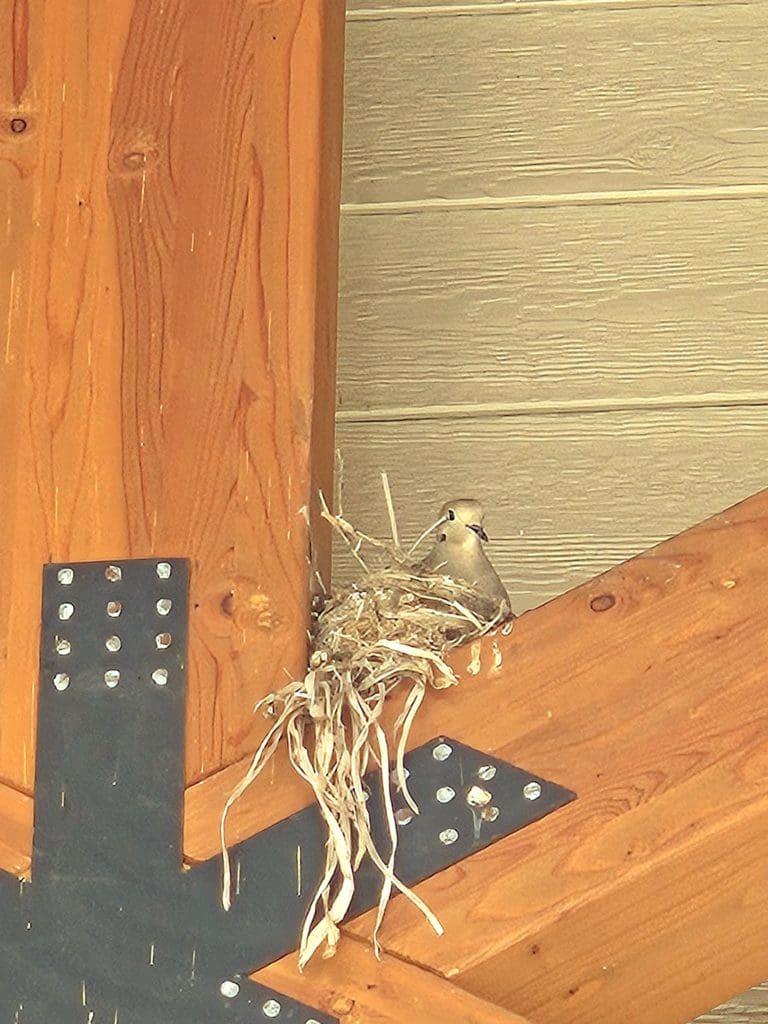By Kennedy Zittel, naturalist

If you plan on visiting the nature center anytime soon, right before you walk through the front doors, take a glance up. Nestled atop one of the beams may be a small, tan- colored head with large black eyes staring down at you (or perhaps a white butt and long tail). A mourning dove family has decided to create their home directly above our front doors. You can’t blame them for finding such a perfect spot to raise a family – out of the wind and rain and in a location known for people who love birds that don’t mind sharing space with them.
With their small head, plump body, and long tail – mourning doves stand out amongst other birds that we commonly see. They are a soft brown-buff color with pink legs, with black spotted and white-tipped wings that extend towards their long pointy tail.
Mourning doves can often be seen picking at seeds on the ground, seeds make up 99% of their diet. In fact, they need to eat 12-20% of their body weight per day, around 71 calories! They’re able to store swallowed seeds in their crop (an enlargement of the esophagus) until they find a safe perch to eat their meal.
They aren’t very picky about where they nest. When they aren’t nesting above a nature center’s front door, they nest in branches of evergreen trees or cottonwoods. They have been known to nest on the ground, too (especially out West). Mourning doves don’t seem bothered by nesting near humans, creating nests on gutters, eaves of buildings, above lights, or in old farm equipment. They sometimes will reuse one of their old nests or even one from a different bird species.
Their 8-inch-wide nests are created out of twigs, grasses, and pine needles. Their unlined nests give little insulation for the nestlings. They will lay only two eggs at a time but can lay up to 5-6 clutches per year.
Mourning doves are commonly found in areas near humans and also in fields and other open habitats. They are known for their drawn-out soft calls, coo-ah coo coo. Their sad sounding song is where they get their name. They also make a sharp whistling sound when they are startled into flight. This sound actually comes from their wings as the wind vibrates their feathers.
I hope that the next time you are out to the Dunes, you (quietly) say hello to our new welcoming committee and see what other birds you can find in the preserve.
Photo of Mourning Dove by Kennedy Zittel
